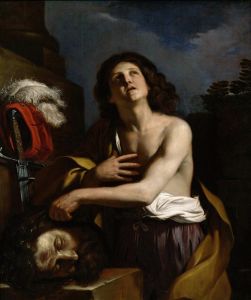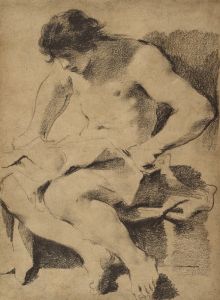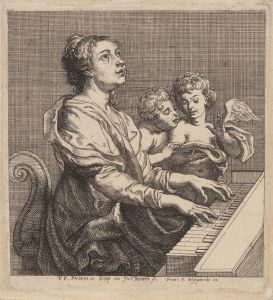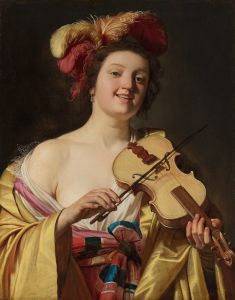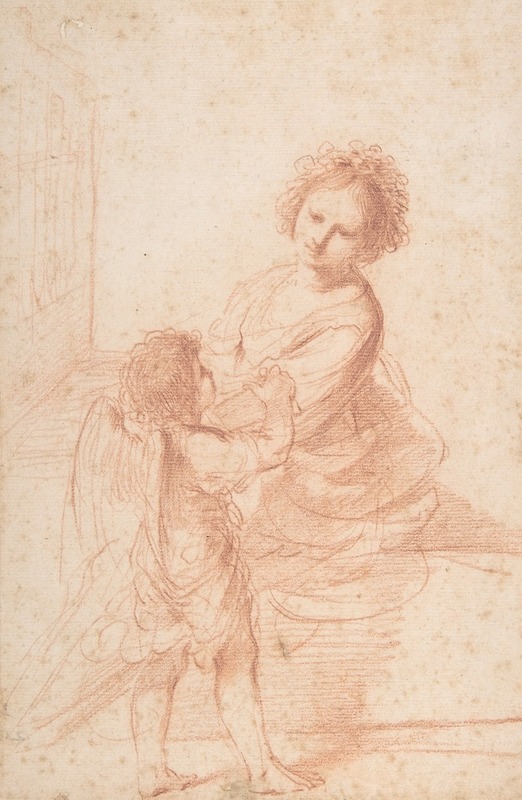
Saint Cecilia Playing the Organ
A hand-painted replica of Guercino’s masterpiece Saint Cecilia Playing the Organ, meticulously crafted by professional artists to capture the true essence of the original. Each piece is created with museum-quality canvas and rare mineral pigments, carefully painted by experienced artists with delicate brushstrokes and rich, layered colors to perfectly recreate the texture of the original artwork. Unlike machine-printed reproductions, this hand-painted version brings the painting to life, infused with the artist’s emotions and skill in every stroke. Whether for personal collection or home decoration, it instantly elevates the artistic atmosphere of any space.
Saint Cecilia Playing the Organ is a painting created by the Italian Baroque artist Giovanni Francesco Barbieri, commonly known as Guercino. This artwork is believed to have been completed around 1620–1625, during the early part of Guercino's career when he was gaining recognition for his dynamic compositions and use of dramatic chiaroscuro.
The painting depicts Saint Cecilia, the patron saint of music, seated at an organ. She is portrayed with a serene and contemplative expression, emphasizing her spiritual connection to music and her devotion to God. The organ, a symbol of sacred music, is a central element in the composition, reinforcing Saint Cecilia's association with the divine through her musical talents. The work reflects Guercino's skill in capturing both the physical and emotional presence of his subjects, a hallmark of his Baroque style.
Guercino's use of light and shadow in this painting is characteristic of his early period, influenced by the tenebrism of Caravaggio. The contrast between the illuminated figure of Saint Cecilia and the darker background draws the viewer's attention to her face and hands, which are delicately positioned on the organ keys. This technique enhances the sense of intimacy and spirituality in the scene.
The painting is also notable for its rich color palette, with warm tones that add depth and vibrancy to the composition. Guercino's attention to detail is evident in the textures of the fabrics and the intricate design of the organ, showcasing his technical mastery.
While the exact commission details of the painting are not well-documented, it is known that Guercino often created works for religious patrons and institutions. Saint Cecilia was a popular subject in Christian art during the Baroque period, and her representation in this painting aligns with the era's emphasis on emotional engagement and the glorification of saints.
Today, Saint Cecilia Playing the Organ is housed in the National Gallery of Art in Washington, D.C. It remains an important example of Guercino's early work and his contribution to Baroque art. The painting continues to be admired for its combination of technical skill, emotional resonance, and spiritual depth.





